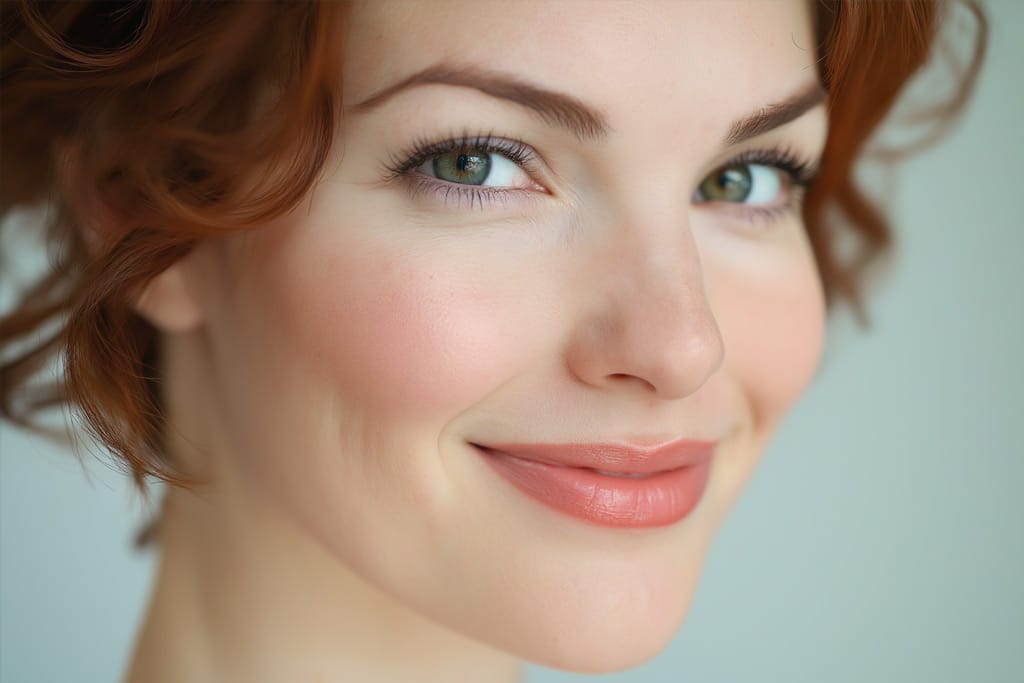
Collagen-stimulating dermal fillers are becoming a cornerstone of modern aesthetic medicine, offering patients a natural, long-lasting approach to rejuvenation. According to recent market data, the demand for these biostimulatory treatments has increased by over 20% annually, driven by their ability to deliver subtle, progressive enhancements. Among the leading options, Sculptra and Radiesse stand out for their distinct mechanisms and versatile applications. This article will compare these two fillers to help you make informed decisions about incorporating them into your practice.
Understanding the Basics of Biostimulatory Fillers
Biostimulatory fillers differ from traditional hyaluronic acid-based products by stimulating the body’s natural collagen production rather than providing immediate volume alone. The result is a gradual improvement in skin texture, elasticity, and volume that looks natural and lasts longer. These fillers are particularly appealing to patients seeking subtle, regenerative results with fewer maintenance treatments over time.
Sculptra Overview
Sculptra is formulated with Poly-L-lactic acid (PLLA), a biodegradable compound that works deep within the dermis to stimulate collagen synthesis. While its results take time to develop, the outcome is a more youthful, natural appearance that enhances gradually.
Key Features of Sculptra
1. Mechanism of Action
Sculptra’s active ingredient, Poly-L-lactic acid (PLLA), is a biodegradable synthetic polymer that has been used in medical applications for decades, including absorbable sutures. When injected, PLLA particles are distributed into the dermis, where they stimulate the fibroblasts to produce new collagen. Unlike traditional fillers that provide instant volume, Sculptra works gradually by enhancing the skin’s natural regenerative processes. Over several weeks to months, this results in improved skin thickness, elasticity, and volume, creating a more youthful and natural appearance.
2. Best Use Cases
Sculptra is highly versatile and is primarily used for treating volume loss caused by aging, weight loss, or other factors. Common applications include:
- Global Volume Restoration: Sculptra is ideal for patients with hollowed cheeks, sunken temples, or generalized facial volume loss.
- Skin Rejuvenation: It improves skin quality by addressing skin laxity and fine lines, particularly in the mid and lower face.
- Body Contouring (Off-Label): Beyond facial rejuvenation, Sculptra has gained popularity for enhancing body areas, including the buttocks, thighs, and even the arms, offering subtle improvements in volume and skin firmness.
3. Treatment Protocol
A typical Sculptra regimen involves multiple sessions (usually 2–3) spaced 4–6 weeks apart. This approach allows for a gradual buildup of collagen, ensuring that the results remain natural and aligned with the patient’s expectations. For optimal results, the provider mixes Sculptra with sterile water several hours before injection and follows specific dilution guidelines to achieve even distribution within the dermis.
4. Longevity and Results
Sculptra’s effects are not immediate but build up over time, with patients noticing improvements within a few weeks after their first session. Full results are typically visible 3–4 months after the initial treatment series. The results can last up to two years or more, making it an excellent option for patients who prefer fewer maintenance treatments compared to traditional fillers.
5. Safety Considerations
The success of Sculptra treatments depends heavily on technique and patient compliance. Proper injection techniques, including placing the product in the correct dermal plane, are essential to avoid complications such as nodules or uneven collagen formation. Additionally, patients must perform a prescribed massage regimen (commonly 5 minutes, 5 times a day, for 5 days) after each session to ensure even distribution of PLLA and minimize the risk of adverse effects.
6. Patient Profile
Sculptra is particularly suited for patients in their 30s to 60s experiencing age-related volume loss or skin laxity. It’s also an excellent option for patients seeking natural-looking results that develop over time, without the “overfilled” appearance often associated with some other treatments. Patients should be willing to commit to multiple sessions and understand the gradual nature of the results.
Radiesse Overview
Radiesse is a unique biostimulatory filler composed of Calcium hydroxylapatite (CaHA) microspheres suspended in an aqueous gel carrier. This dual-action filler delivers immediate volume while stimulating the body’s natural collagen production for long-term improvements. Known for its thicker consistency and structural integrity, Radiesse is particularly effective for addressing moderate to severe volume loss and sculpting defined facial contours.
1. Mechanism of Action
The key ingredient in Radiesse, Calcium hydroxylapatite, is a naturally occurring mineral found in bones and teeth, making it biocompatible and safe for aesthetic use. When injected, the gel matrix provides instant volumization to smooth wrinkles and folds. Over time, as the gel is absorbed, the CaHA microspheres stimulate fibroblasts in the dermis to produce collagen. This ongoing collagen production enhances skin elasticity, firmness, and volume, extending the filler’s effects long after the initial treatment.
2. Best Use Cases
Radiesse is a versatile filler that excels in areas requiring structural support and precision. Common applications include:
- Lower Face Contouring: Radiesse is ideal for defining the jawline, augmenting the chin, and restoring volume to the midface.
- Nasolabial Folds: It effectively reduces the appearance of deep wrinkles and folds around the mouth.
- Hand Rejuvenation: Radiesse is the only FDA-approved filler for hand augmentation, restoring volume and minimizing the appearance of veins and tendons.
- Off-Label Uses: Some practitioners use Radiesse for body contouring in areas like the buttocks, neck, and décolletage, though these applications require advanced techniques.
3. Treatment Protocol
Radiesse is typically administered in a single session, offering immediate results that can last between 12 and 18 months. The amount required depends on the treatment area, with most facial applications requiring 1–2 syringes. For hand rejuvenation, practitioners often use a cannula for safer, more precise placement. Its thicker consistency allows for sculpting and lifting, providing a firmer and more contoured appearance.
4. Longevity and Results
Patients benefit from the dual-action nature of Radiesse. The immediate volumizing effect is visible upon injection, while collagen stimulation continues for months after the treatment. These combined effects provide natural-looking, long-lasting improvements that are particularly appreciated in areas with significant volume loss or deep folds.
5. Safety Considerations
Radiesse is generally well-tolerated but requires careful injection techniques to avoid complications. Because of its thicker consistency, it is not recommended for areas with thin or delicate skin, such as the tear troughs or superficial dermal layers. Potential risks include overcorrection, nodule formation, and localized swelling, though these can be minimized with proper technique and product placement. Radiesse should not be injected into highly mobile areas to avoid uneven distribution.
6. Patient Profile
Radiesse is best suited for patients seeking immediate, noticeable results with long-term collagen benefits. It is particularly effective for individuals with more advanced signs of aging, such as deeper wrinkles, facial sagging, or volume loss. Men often prefer Radiesse for its firmer consistency and ability to create sharper, more defined contours. The product is also a great choice for patients interested in hand rejuvenation.
7. Unique Advantages
Radiesse stands out from other fillers due to its:
- Immediate Results: Patients walk away with visible improvements after one session.
- Structural Support: Its ability to provide firmer and more precise enhancements makes it ideal for contouring.
- FDA Approval for Hands: The only filler specifically approved for rejuvenating the hands, offering a niche treatment option.
Comparing Sculptra and Radiesse
Longevity
Sculptra results develop over several months and typically last up to 2 years with proper maintenance. Radiesse provides immediate results, with effects lasting 12–18 months.
Ideal Candidates
Sculptra suits patients with significant volume loss or those seeking gradual, natural results. Radiesse is better for patients who prioritize immediate improvements in specific areas, such as the jawline or hands.
Treatment Areas
Sculptra is versatile for global rejuvenation, including the face, décolletage, and buttocks. Radiesse excels in precision treatments for the lower face, nasolabial folds, and hands.
Safety and Side Effects
Sculptra requires post-treatment massage to prevent nodules or uneven collagen buildup. Radiesse can lead to overcorrection if improperly placed or injected superficially. Both products are contraindicated for patients with autoimmune conditions or severe allergies.
Cost and Convenience
Sculptra may involve higher upfront costs due to multiple sessions, but its results last longer. Radiesse is more cost-effective for patients seeking immediate results in fewer sessions.
Choosing the Right Product for Your Practice
When deciding between Sculptra and Radiesse, consider your patient demographics, practice focus, and the outcomes your patients seek. Sculptra is ideal for practices specializing in full-face rejuvenation and natural enhancements, while Radiesse is better suited for clinics focusing on precise, immediate corrections.
For clinics aiming to cater to a broader patient base, offering both products provides flexibility and versatility. Ensure your staff is well-trained in the specific techniques required for each filler. For instance, Sculptra treatments require thorough post-injection massage, while Radiesse demands careful placement to prevent overcorrection.
Conclusion
Sculptra and Radiesse are both powerful tools in aesthetic medicine, each offering unique benefits. By understanding their differences and aligning your recommendations with patient goals, you can deliver outstanding results and elevate your practice. Offering both fillers ensures you can meet a wide range of patient needs, from gradual, natural enhancements to immediate corrections.
Frequently Asked Questions

About the Author: Doris Dickson is a specialist writer for Health Supplies Plus, focusing on the aesthetic medicine industry. She diligently researches cosmetic treatments and products to provide clear, concise information relevant to licensed medical professionals. Her work supports Health Supplies Plus’s commitment to being a reliable informational resource and trusted supplier for the aesthetic community.
Disclaimer: The content provided in this article is intended for informational purposes only and is directed towards licensed medical professionals. It is not intended to be a substitute for professional medical advice, diagnosis, or treatment, nor does it constitute an endorsement of any specific product or technique. Practitioners must rely on their own professional judgment, clinical experience, and knowledge of patient needs, and should always consult the full product prescribing information and relevant clinical guidelines before use. Health Supplies Plus does not provide medical advice.
